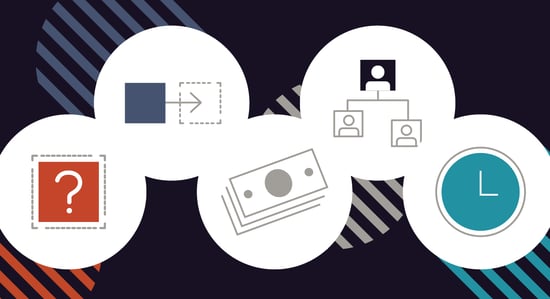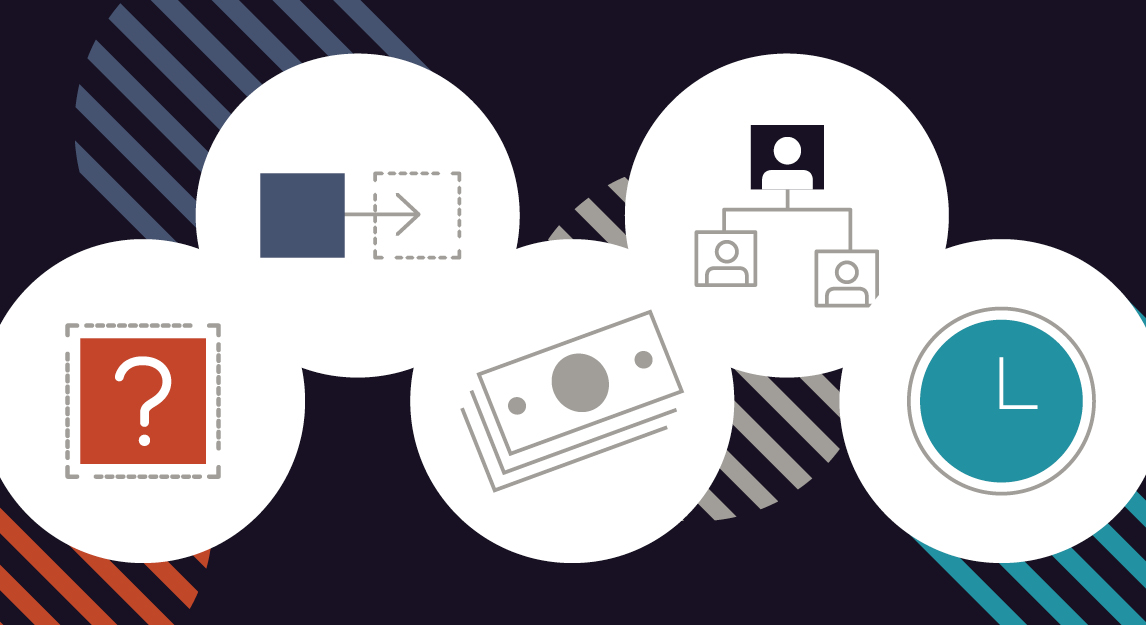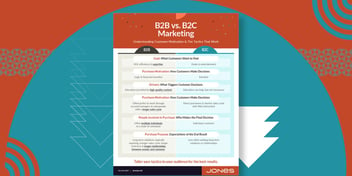5 Characteristics of The Perfect B2B Lead (infographic)

Anyone who has managed an online lead generation campaign knows one thing: Not all of the leads that you generate are worth following up on.
In fact, as many as 9 in 10 of the leads generated through your inbound marketing program should not be sent on to your sales department, at least not right away. If you have created a robust content marketing program, you are likely to capture lead information from many people who visit your website for information, but who aren’t ready to buy.
What should you look for before transitioning leads to sales?
You should define what is necessary for a lead to be considered sales-qualified based on five criteria:
-
Need
-
Fit
-
Budget
-
Influence
-
Timing

Lead Qualification Criteria #1: Need
The first question to ask or determine is if this lead actually has a need. Are they trying to solve a specific problem? Your lead generation efforts may capture contact information from individuals who aren’t actually looking to solve a problem. They may simply be reading about something they have an interest in, or they may be students researching your industry. While your content caught their interest, and their email address, they don’t actually need anything you have to offer.
One way of scrubbing these leads from your contact list could be to filter by the type of email address given, eliminating those from free email platforms such as Gmail or from educational organizations.
Lead Qualification Criteria #2: Fit
Secondly, if it is likely a lead does have a problem and a need, is your solution a good fit for them? This may be harder to determine just by an email address, but as a lead goes through your lead nurturing workflow and fills out progressive forms that collect more information, you can often find information that would either ‘rule them in’ or disqualify them from transitioning to sales.
Examples could be geographic location—if your company serves only North America, you can filter out leads that are from Europe or Asia. With the global nature of internet content, it isn’t as uncommon as you might think. The ebooks, checklists and other materials in our Inbound Learning Library have been downloaded by readers in locations as diverse as London, Barcelona, Cairo, San Antonio, Tokyo and Cape Town, to name just a few.
Another example of a “fit” disqualifier could be company size. Chances are you have an ideal customer in mind that is large enough to be able to afford your solution (see the next criteria) but also a size that you are able to provide for. You may want to use automated filtering to eliminate companies that fall outside your “sweet spot” so that sales representatives don’t spend time courting companies who are too small or too large for your product or service.
Lead Qualification Criteria #3: Budget
This qualifier may tie into company size, which I just mentioned as a possible disqualifying characteristic. If a company is smaller than your typical customer, it may simply not have the budget necessary to invest in your solution. Determining this, however, may require more personal connection rather than relying on filtering through your marketing automation and CRM software.
Lead Qualification Criteria #4: Influence
Even if a lead seems to have a need, and their company seems to be a good fit, you still need to determine if the specific individual is someone with the authority to make a purchasing decision. Even if they aren’t the ones making the final decision, it isn’t necessarily instantly disqualifying—determine if they have a strong influence in the decision-marking process. One example we have used in building buyer personas and lead qualification criteria in the past applied to a company that offered registration management software for healthcare providers. The primary user of the software would be the organization’s registrar and that team, but the final purchase decision would most likely be made by a chief technology officer and/or chief financial officer. (Read about how we targeted content marketing to each of those buyer personas.)
Lead Qualification Criteria #5: Timing
The final characteristic that should determine lead transition to sales is less about IF they should be passed along and more about WHEN they should be moved ahead. A lead might meet all four of the criteria we have already discussed, but the timing might still be wrong for an immediate full-court press from the sales team.
Is the lead just at the beginning of the research process? Are they in a contract with another vendor for another year or more? If those are the case, they should be considered a warm lead: someone to keep connected with, providing valuable information through workflows and occasional contact, but low pressure.
Or are they in need of a solution NOW? If the lead is looking to make a decision right away, don’t delay. Pass hot leads on immediately, with all the information about them you can provide to help your sales team answer their key questions and objections.
Obviously, the specifics of characteristics such as fit and budget will vary greatly from one business to another. Take time to identify the definitions your team is seeking in qualifying a lead for your own organization. Then make the most of your marketing automation solution to filter the leads generated on your website to focus efforts on those most likely to turn into customers.
If you need assistance making the most of your HubSpot marketing automation investment to nurture and qualify leads, let’s talk. JONES is a certified HubSpot partner agency and can navigate the details for you. Schedule a time on my calendar to learn more.
-1.png?width=1652&height=294&name=Jones(RGB)-1.png)












